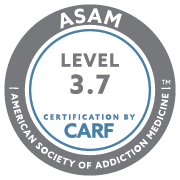Flakka, also known as gravel, originates from South Florida. It’s highly addictive and cheap which has led to hospitalizations. Both short- and long-term flakka effects are unpredictable. But, since it can go for as little as $5 on the streets, individuals suffering from a substance use disorder don’t wonder about what is flakka. They just want to get high.
The high from this drug is dangerous. But, battling an addiction to it can be even more so. A reputable drug and alcohol addiction treatment center can help clients detox and recover comfortably.
What Is Flakka?
Flakka is a type of stimulant drug known as alpha-PVP. It’s in the class called synthetic cathinones, also known as New Psychoactive Substances (NPS). In shorts, NPSs are meant to mimic the effects of more popular illegal drugs. Some of these popular drugs include LSD, marijuana, cocaine, and ecstasy. Synthetic cathinones are commonly white or brown powders and crystals.
 NPSs are on the rise, according to the Alcohol and Drug Foundation (ADF). Over 81 synthetic cathinone derivatives were reported. These types of drugs are typically injected, swallowed, snorted, or vaporized. Depending on the form, effects may start after a few minutes up to 45 minutes.
NPSs are on the rise, according to the Alcohol and Drug Foundation (ADF). Over 81 synthetic cathinone derivatives were reported. These types of drugs are typically injected, swallowed, snorted, or vaporized. Depending on the form, effects may start after a few minutes up to 45 minutes.
Flakka has been compared to khat and bath salts. Like most stimulants, flakka speeds up the body’s systems. Basically, they speed up the messages between the brain and the body. In particular, flakka affects the central nervous system (CNS). The CNS is made up of nerves in the spinal cord and brain. This bodily system helps the body relax and makes your heartbeat accelerate or decelerate.
Flakka speeds up the reuptake and stimulation of the following chemicals in the CNS:
- Dopamine: Plays a role in motivation, pleasure, reward-seeking, and movement
- Epinephrine (adrenaline): Increases breathing, heart rate, blood flow, and energy
- Norepinephrine: Increases the heart rate and blood sugar levels
- Serotonin: Makes people feel content, stable, and relaxed
Drugs like flakka are considered designer drugs. They’re made in illegal laboratories and then sold to drug dealers for distribution. They’re less expensive than popular drugs that have been on the market for a while. This makes it possibly more dangerous for that reason.
Popular drugs, like marijuana and cocaine, have been studied for decades. The long-term effects of designer drugs aren’t fully known. Plus, they’re cheaper, allowing more people to purchase them.
What Are Flakka Symptoms of Addiction?
Flakka symptoms of addiction are similar to other synthetic cathinones. People who exhibit an addiction to bath salts may act similarly to those addicted to flakka. However, flakka is different from bath salts because it’s much more powerful. That means stronger, more violent symptoms of addiction. 
Flakka symptoms and signs of addiction include:
- Episodes of extremely depressed or elevated moods
- Excessive sweating
- Needle marks from injection
- Needing money all the time
- Acting bizarrely (mainly undressing inappropriately)
- Inability to stop using flakka despite trying
- Obsessive thoughts and actions to redose
Addiction looks different for every individual. Teens and adults alike have abused flakka. The internal struggle is largely the same, though. Individuals suffering from a flakka use disorder are unable to take control of their lives alone. They want to, but can’t. Good people end up with an addiction to drugs. Most just need help recovering from this medical disorder.
Short-Term Flakka Effects
Effects typically last anywhere from two to four hours, although Case Reports in Psychiatry writes that effects may last days. One 17-year-old in South Florida found herself hospitalized for days after her friends slipped flakka into her food. As a result, she experienced agitated delirium.
When people are in this state, they can experience:
- Bizarre behaviors
- Agitation
- Anxiety
- Random, violent outbursts
- Confusion
- Muscle jerks
- Seizures (in rare cases)
Ultimately, she was fine but needed to be hospitalized for three days. Her story is a cautionary tale that could have ended much worse. Flakka has other short-term effects. Some of them are similar to the high from meth.
Here are common short-term effects of flakka:
- Euphoria
- Increased energy levels
- Feeling more friendly than usual
- A deeper connection with music
- Disrupted sleep
- Clenched facial muscles
- Dizziness
- Time seems distorted
- Memory loss
- Dilated pupils and blurred vision
 The majority of the above effects attract those with a substance use disorder. The high is extremely intense and is relatively inexpensive. For those reasons, people who use flakka can find themselves taking more than they expected. Higher doses taken intentionally or accidentally can result in agitated delirium. It can also lead to chest pain, skin rashes, nose bleeds, and even death.
The majority of the above effects attract those with a substance use disorder. The high is extremely intense and is relatively inexpensive. For those reasons, people who use flakka can find themselves taking more than they expected. Higher doses taken intentionally or accidentally can result in agitated delirium. It can also lead to chest pain, skin rashes, nose bleeds, and even death.
In 2015, The New York Times reported 18 deaths in South Florida as a result of flakka use. Police traced the source back to China, although this substance is also made in clandestine labs. U.S. law enforcement worked with China officials to outlaw it over there to stop the supply.
In Broward County, a man impaled himself upon a fence likely because of intense hallucinations. Other anecdotes include a minor running down the streets covered in blood claiming to be Satan. Short-term flakka effects are clearly both powerful and random.
Long-Term Flakka Effects
According to the Journal of Addictions Nursing, synthetic cathinones like flakka have many long-term effects on health. Mainly, the journal mentions that using this drug for an extended period of time could result in permanent psychosis or other psychiatric disorders. The National Institute of Mental Health (NIMH) describes psychosis as “conditions that affect the mind where there has been some loss of contact with reality.”
People who use flakka might experience hallucinations. Prolonged use can cause them to have hallucinations when they aren’t using it. Additionally, psychotic episodes include sleep problems, pulling away from friends and family, problems staying motivated, and overall difficulty functioning.
With this, using flakka for a long time can increase the chance of psychiatric disorders such as:
- Generalized anxiety disorder (GAD)
- Panic disorder
- Social phobia/social anxiety disorder (SAD)
- Major depression
- Persistent depressive disorder
- Bipolar disorder
- Schizophrenia
About 50% of people diagnosed with a substance use disorder also have a mental health disorder. The National Institute on Drug Abuse (NIDA) found that this number increases for adolescents. Over 60% of adolescents surveyed in addiction treatment programs were diagnosed with a psychiatric disorder. A dual diagnosis, or co-occurring disorders, happens when a person has a mental illness and substance use disorder. It’s also known as comorbidity.
Flakka Effects on the Kidney
The Texas Poison Center Network experienced an influx of calls due to flakka. On their site, they warn that hyperthermia is a long-term flakka effect. This is because this type of drug causes muscles to break down over time. The kidney especially takes a toll; it can fail because of extensive flakka use. Former addicts may have to deal with dialysis until they die.
Kidney dialysis is done via minor surgery or through a catheter. Either process filters the blood from toxins and waste and helps control blood pressure, says the National Kidney Foundation.
Flakka Effects and Flakka Symptoms of Withdrawal
The resurgence of flakka use is relatively new in comparison to drugs like meth and coke. So, there’s limited literature around known flakka effects. This includes flakka symptoms of withdrawal. Yet, the ADF writes a person is having a withdrawal from flakka may experience the following:
- Irregular sleep patterns
- Overly tired
- Dizziness
- More irritable and sad than usual
- Impaired immune system
- Loss of memory
- Paranoia
- Mood disorders (ie: anxiety and depression)
It’s impossible to treat flakka safely without medical intervention. Withdrawal can be uncomfortable at best and deadly at its worst. It has to do with the fact that this drug affects the CNS. The “feel-good” chemicals flakka stimulates are depleted when a person goes through withdrawal.
In turn, the brain causes physical withdrawal symptoms. It lacks chemicals like dopamine and serotonin to function. It’s also used to the amount the brain was pumping out on drugs. Brain chemistry can go back to normal after addiction. Yet, the process takes time and it’s not easy. It’s best to go to an addiction treatment center that can offer clients the right tools to aid recovery.
Get Treatment for Flakka Symptoms of Addiction at New Directions for Women
 Flakka can be more difficult to recover from than other drugs. Hence, treatment looks different based upon the severity of the case. Before treatment starts, a person suffering from a Flakka addiction will need to detox it from their body. We offer high-quality detox services to allow clients to get rid of the build-up of toxins in the brain and body as comfortably as possible.
Flakka can be more difficult to recover from than other drugs. Hence, treatment looks different based upon the severity of the case. Before treatment starts, a person suffering from a Flakka addiction will need to detox it from their body. We offer high-quality detox services to allow clients to get rid of the build-up of toxins in the brain and body as comfortably as possible.
A licensed physician will administer small doses of a drug to stop the body from shutting down completely without it. If a client has serious withdrawal symptoms, they might prescribe additional medication to help. These can minimize the chance of persistent mood disorders, pain, and restlessness.
New Directions offers several treatment programs to help with flakka addiction after detox:
- Wellbriety Programs: We are certified to help Native Americans overcome drug and alcohol addiction. As of 2019, we’re the sole providers of this treatment in the county.
- Therapy: New Directions offers a variety of therapies, which include eye movement desensitization and reprocessing (EMDR), exercise therapy, experiential therapy, family therapy, individual therapy, and group therapy.
- Intensive Sober Living Programs: New Directions offers clients a chance to maintain responsibilities in a controlled environment. It’s different from residential treatment since members can leave, but will live at our facility.
- Residential Treatment: We consider this to be the most intense form of treatment. Clients won’t be able to leave our facility until treatment is complete. This might be the best option for a flakka addiction since it’s highly addictive.
- IOPs and Partial Day Programs: Intensive outpatient programs (IOPs) and partial day programs allow clients to get the treatment they need with fewer time commitments. Either program is intense, but clients will be able to go home at the end of the day.
It’s Time To Get Help
If you are struggling with an addiction to Flakka, it may be overwhelming to research treatment. Our admissions counselors are more than happy to help you decide which program is right for you. Contact us to start the process of recovering today.
References:
- https://adf.org.au/drug-facts/synthetic-cathinones/
- https://www.ncbi.nlm.nih.gov/pmc/articles/PMC4933860/
- https://www.ncbi.nlm.nih.gov/books/NBK279390/#:~:text=The%20central%20nervous%20system%20(CNS,peripheral%20nervous%20system%20(PNS).
- https://www.nih.gov/news-events/nih-research-matters/dopamine-affects-how-brain-decides-whether-goal-worth-effort
- https://www.health.harvard.edu/mind-and-mood/six-common-depression-types
- https://www.hormone.org/your-health-and-hormones/glands-and-hormones-a-to-z/hormones/serotonin#:~:text=Serotonin%20is%20the%20key%20hormone,sleeping%2C%20eating%2C%20and%20digestion.
- https://www.medicalnewstoday.com/articles/325485
- https://www.poisoncontrol.org/the-dangers-of-flakka-2/
- https://www.nytimes.com/2015/06/22/world/asia/in-china-illegal-drugs-are-sold-online-in-an-unbridled-market.html
- https://www.nytimes.com/2015/05/25/us/police-in-florida-grapple-with-flakka-a-cheap-and-dangerous-new-drug.html
- https://www.nursingcenter.com/wkhlrp/Handlers/articleContent.pdf?key=pdf_00060867-201810000-00005
- https://www.nimh.nih.gov/health/topics/schizophrenia/raise/what-is-psychosis.shtml
- https://www.hhs.gov/answers/mental-health-and-substance-abuse/what-are-the-five-major-types-of-anxiety-disorders/index.html
- https://www.kidney.org/atoz/content/dialysisinfo










